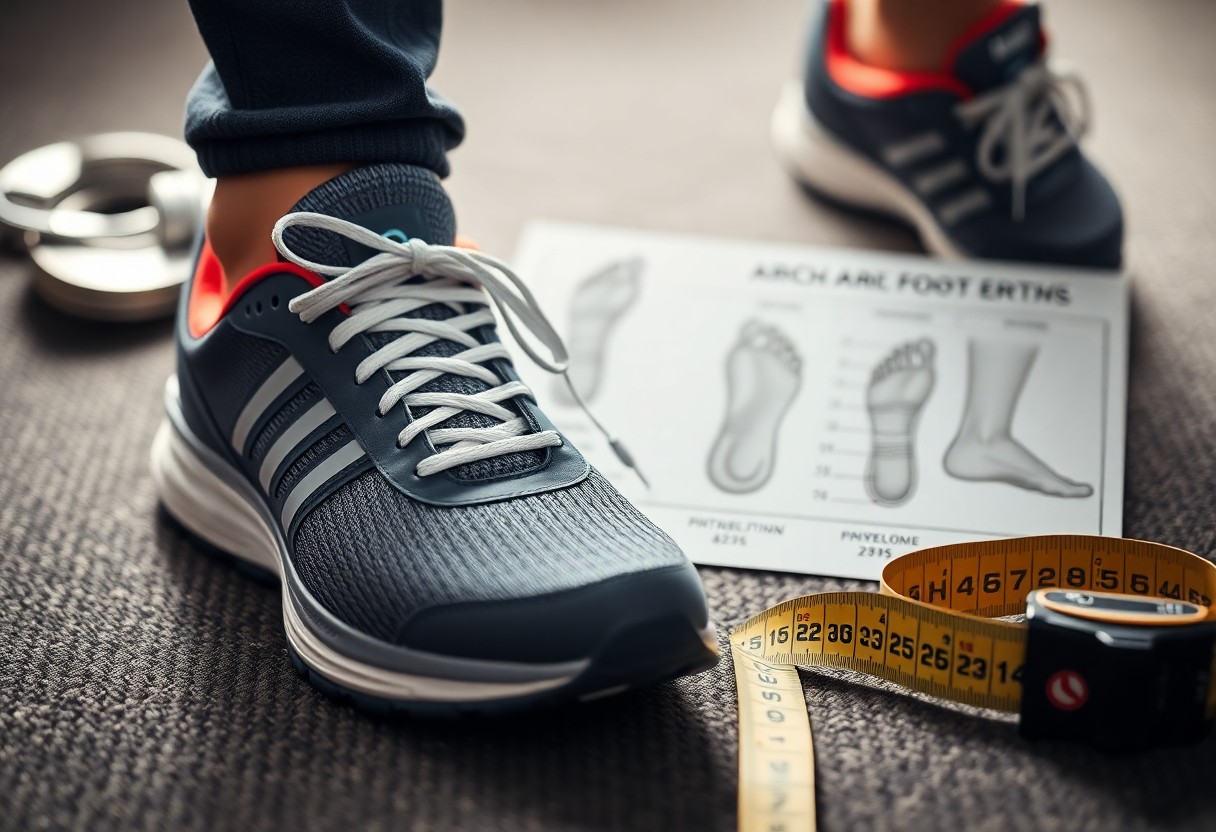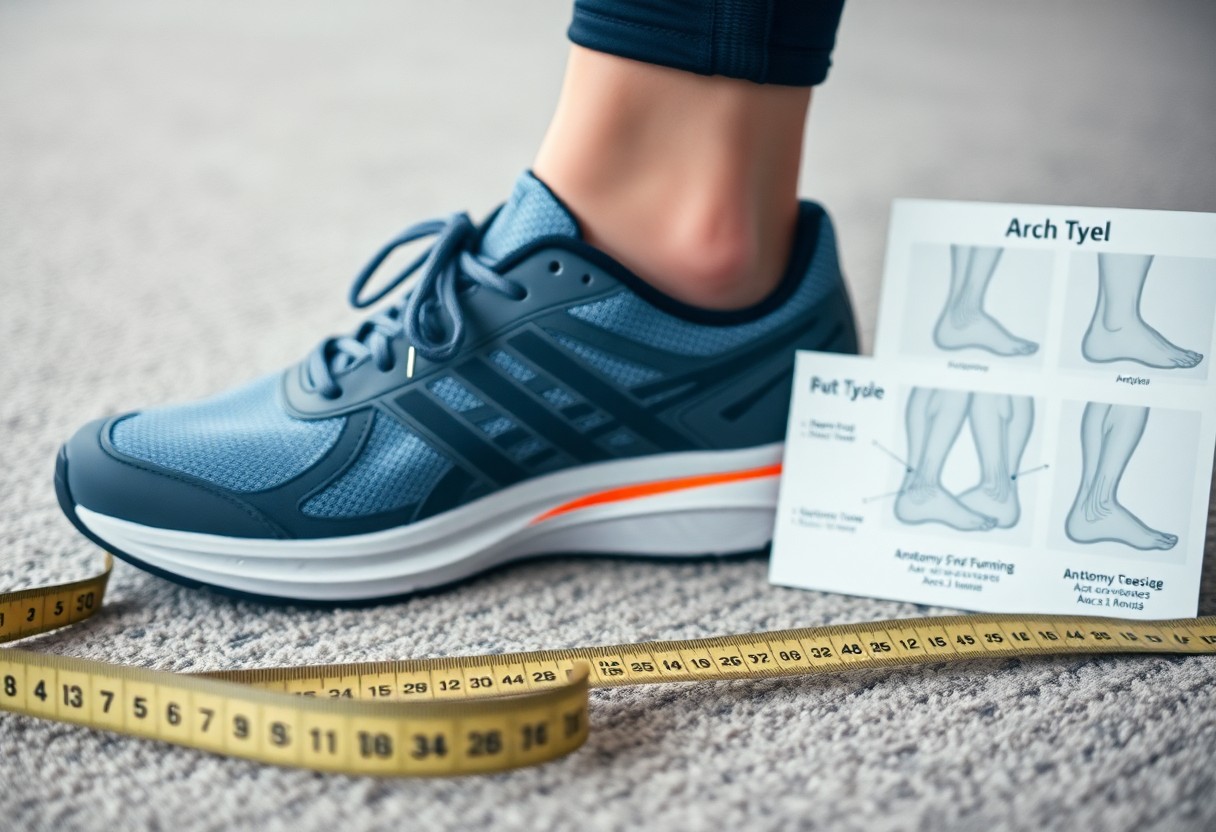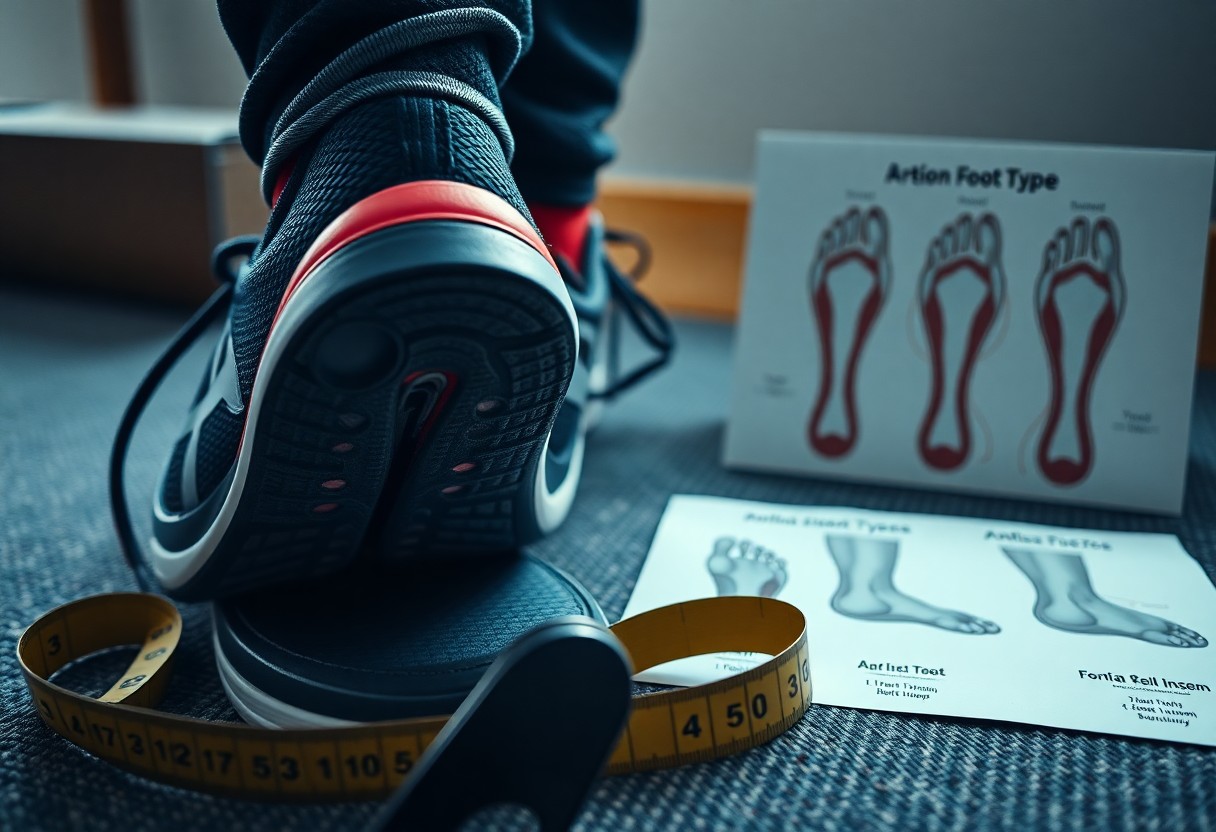Supporting your feet effectively goes beyond simply adding arch support to your footwear. Surprisingly, most individuals do not actually need arch support in their shoes. Research indicates that forgoing arch support may strengthen your foot muscles over time. Relying on artificial support can lead to muscle atrophy, as the human foot is naturally designed with arches that flex and adjust to different surfaces. By constraining this natural motion with rigid supports, you may inadvertently harm your foot health over the long term. This detailed article seeks to shed light on the science surrounding arch support, empowering you to make knowledgeable choices about your foot health.

Uncovering the Historical Development of Arch Support in Footwear
The natural support system of your feet has played a crucial role in the design of footwear throughout history. The concept of arch support gained prominence in the 1920s thanks to Dr. William Scholl, who was a pioneer in commercial orthotics. Before this innovation, individuals relied on the natural strength and flexibility of their feet for support. Understanding this historical background provides valuable insights into how our perception of foot health and footwear has transformed over the years.
Tracing the Evolution of Footwear Traditions
The history of footwear reveals that ancient populations primarily wore simple, flat sandals or often went barefoot, which greatly supported natural foot development and strength. The feet of our ancestors retained their robustness and flexibility without reliance on artificial supports, as evidenced by studies on indigenous communities who continue to practice traditional footwear customs. This historical viewpoint emphasizes the critical role of natural foot mechanics in sustaining optimal foot health.
Analyzing Modern Standards in Shoe Design
By the mid-20th century, particularly the 1950s, shoe manufacturers began to standardize built-in arch support in their products. Nowadays, the majority of modern footwear incorporates structured arch support, a feature that has become commonplace despite limited scientific evidence supporting its necessity for everyone. This trend reflects changes in consumer preferences and industry practices, while also prompting discussions on how such designs may affect overall foot health.
Today, arch support is so common that 70% of contemporary shoes include this feature. However, studies published in the Journal of Foot and Ankle Research suggest that a heavy dependence on arch support might lead to muscle weakness in the feet. Consequently, many podiatrists now recommend incorporating periods of barefoot walking and utilizing minimally supportive footwear to help maintain natural foot strength.

Examining the Complex Structure of the Foot
Your feet, consisting of 26 bones, 33 joints, and over 100 muscles, operate most effectively when allowed to move freely. The arch of the foot serves as a self-supporting structure that gains strength from regular use while becoming weaker when subjected to artificial supports. Research shows that 75% of individuals who wear conventional shoes with arch support exhibit reduced foot muscle activity, ultimately leading to a decrease in natural foot strength over time.
Revealing the Wonders of Natural Foot Mechanics
The design of your foot is an engineering marvel, equipped with a sophisticated self-support system. Walking barefoot or in minimal shoes allows for unrestricted motion, enabling your arches to flex and strengthen naturally. Studies suggest that those who frequently walk barefoot or use minimal shoes develop stronger foot muscles and more stable arches compared to individuals who depend on supportive footwear. This finding underscores the importance of allowing natural movement for optimal foot health.
Optimizing Muscle Function and Development
Disrupting the natural movement of your feet can hinder their development. Your foot muscles thrive on regular engagement through natural activities to maintain their strength. Research published in Nature indicates that using shoes without arch support can significantly contribute to the development of stronger intrinsic foot muscles. This correlation emphasizes the importance of engaging in natural movement for fostering optimal foot health.
Moreover, it is vital to understand the effects of wearing shoes with built-in arch support. Such footwear can lead to decreased engagement of the foot muscles, potentially resulting in weakness over time. Studies have illustrated that transitioning to minimal footwear can boost foot muscle strength by as much as 60% in just eight weeks. However, this transition should be approached with caution, especially for individuals with pre-existing foot conditions, to prevent injury.
Investigating Research and Evidence Related to Foot Health
If you're keen to understand the scientific foundation of arch support, numerous studies indicate that your feet can strengthen without relying on artificial support. Various research findings reveal that natural foot movement promotes improved muscle development and enhances arch stability, highlighting the critical role of biomechanics in maintaining foot health.
Key Scientific Studies on the Necessity of Arch Support
Among the most significant research outcomes, a study published in Nature demonstrates that individuals who wear minimal footwear develop foot muscles that are 50% stronger compared to those who wear traditional supportive shoes. This evidence reinforces the idea that regular movement and physical activity allow your feet to maintain their arches naturally and effectively.
Comparative Insights on Footwear Preferences Across Cultures
Contrasting Traditional and Minimal Footwear Users
| Traditional Shoe Users | Minimal Shoe Users |
| Exhibit higher rates of flat feet | Demonstrate superior arch strength |
| Show weaker foot muscles | Exhibit stronger foot muscles |
A thorough examination of different populations shows significant variations in foot health. The structure of your feet can adapt considerably depending on the types of shoes you wear.
Insights from Global Population Studies
| Developed Countries | Barefoot Communities |
| 20% flat foot occurrence | 3% flat foot occurrence |
| Higher reliance on arch support | Natural arch strength |

Understanding the Paradox of Support in Footwear
Challenging popular beliefs, an overreliance on arch support in shoes can undermine your feet's natural strength. The human foot features a complex network of muscles, tendons, and ligaments that work together to provide natural support. When artificial arch support is introduced, your foot muscles may not engage fully, leading to a gradual weakening over time.
Examining the Cycle of Dependency on Arch Support
Regularly using arch support can create a harmful cycle. Feet can become dependent on external support, leading to muscle atrophy. Research shows that 70% of individuals who frequently use arch support report increased discomfort when attempting to walk without these supportive shoes, highlighting the development of this dependency.
Understanding the Connection Between Muscle Weakness and Arch Support
Wearing shoes with built-in arch support could weaken your intrinsic foot muscles by as much as 50%, according to findings in Nature. This weakening compromises the natural arch support system of your feet, potentially resulting in conditions like flat feet and other foot-related issues. It is essential to recognize that this muscle weakness can have broader implications, as weakened foot muscles may negatively affect your overall posture and balance. Research suggests that individuals shifting to minimal footwear often experience a 60% boost in foot muscle strength within six months.
Exploring Natural Alternatives for Optimal Foot Health
For those wishing to step away from conventional arch support, various natural options are available that can enhance foot strength. These methods prioritize allowing your feet to function as intended, promoting the development of stronger foot muscles and improving arch stability through natural movement.
Adopting Minimalist Footwear for Enhanced Natural Movement
Minimalist shoes, characterized by zero drop soles, wide toe boxes, and flexible materials, encourage natural foot movement. These designs allow your feet to function without restrictions, maintaining proper foot mechanics and supporting natural arch strength. Research indicates that regularly wearing minimal footwear can boost foot muscle strength by up to 60% through everyday activities.
Safe Strategies for Transitioning to Minimal Footwear
If you're considering a transition to minimalist footwear, it is essential to take a careful and gradual approach to ensure comfort and safety. Begin by wearing minimal shoes for short durations, gradually increasing the time over several weeks. This method helps prevent overuse injuries as your feet adapt to their newfound freedom, ensuring a smoother transition.
A successful shift should ideally include specific foot strengthening exercises. Start with 10-15 minutes each day in minimal shoes, adding an additional 5-10 minutes weekly. Incorporate exercises like toe spreads and short barefoot walks on safe surfaces. This gradual approach helps to minimize the risk of common transition injuries while effectively developing your natural arch strength.
Medical Considerations for Foot Health Management
It is crucial to recognize that your foot health requires tailored attention. While natural foot movement greatly enhances muscle strength, certain medical conditions may require specific supportive measures. Factors like your foot structure, activity level, and any existing medical conditions will significantly influence your ideal footwear choices.
Determining When Arch Support Is Beneficial
In contrast to common beliefs, arch support is not universally necessary. Nevertheless, individuals with acute injuries, severe flat feet, or specific medical conditions may find temporary or permanent arch support advantageous. Research indicates that merely 10-20% of the population genuinely requires specialized arch support for medical reasons, emphasizing the importance of personalized assessments.
Best Practices for Professional Foot Health Evaluations
To make informed choices about your footwear, it is wise to consult a foot health expert. Comprehensive evaluations should encompass gait analysis, assessment of foot structure, and review of medical history. These components are critical in determining whether you need arch support or if transitioning to minimal footwear is a feasible option.
Guidance from a qualified professional can clarify your foot health journey. A thorough evaluation should include measuring arch flexibility, assessing muscle strength, and analyzing walking patterns. Your healthcare provider should also consider your daily activities and any prior foot injuries to create an effective treatment plan tailored to your individual needs.
Understanding the Impact of Footwear Choices on Foot Health
Ultimately, your choice of footwear plays a significant role in determining your foot health. It is now clear that arch support is not essential for most individuals and could potentially weaken foot muscles over time. Your feet possess inherent strength and flexibility, functioning best when allowed to operate as nature intended. If you're contemplating a shift to minimal footwear, initiating this process gradually will enable your feet to adjust effectively. The evidence strongly suggests that permitting your feet to function without artificial support can lead to stronger muscles and better foot health for the majority. Always consider your unique needs and consult a foot health professional for tailored advice.
Common Questions About Arch Support and Foot Health
Do healthy feet require arch support in their shoes?
For most healthy feet, arch support in shoes is not a requirement. Studies show that natural foot strength develops most effectively without artificial support. The muscles and arches of the foot perform optimally when allowed to function naturally. This finding aligns with research on populations that frequently go barefoot or prefer minimal footwear, which shows stronger foot muscles and fewer arch-related problems.
Can using arch support weaken the feet over time?
Yes, prolonged dependence on arch support can lead to weakened foot muscles. When artificial support replaces the function of foot muscles, those muscles become less active and gradually lose strength, creating a cycle of dependency. Research published in Nature indicates that individuals who consistently wear conventional shoes with arch support often exhibit weaker foot muscles compared to those who choose minimal footwear.
Who genuinely needs arch support in their footwear?
Some individuals with specific foot conditions, injuries, or medical issues may genuinely benefit from arch support. This includes those diagnosed with flat feet, certain foot injuries, or structural abnormalities. However, these situations should be evaluated by a qualified foot health professional capable of developing an appropriate treatment plan. The ultimate goal should be to restore natural foot function whenever possible, rather than relying on permanent support.
The Article Arch Support: Essential Facts About Shoe Necessities Was Found On https://limitsofstrategy.com


Your post raises some intriguing points about the effectiveness of arch support in footwear. I’ve often found myself pondering the balance between comfort and natural foot function. The idea that excessive reliance on supports could lead to muscle atrophy resonates with what I’ve experienced personally. When I shifted to minimal footwear for running, I noticed a significant change in my foot strength and flexibility. Initially, it was a challenge, but over time, my feet adapted and became more resilient on varied terrains.
While I appreciate the insights shared about arch support, I find it intriguing how deeply personal preferences and experiences can influence our views on footwear. I’ve tried various shoe types: from minimalist designs to more cushioned options, and I’ve felt distinctly different impacts on my foot strength and comfort.
Ah, the great arch debate! Who knew our feet had such a drama-filled history? It’s like they’re the Kardashians of the anatomical world—so much attention on them, but maybe they don’t really need all that support! I must confess, I’ve depended on arch support like a crutch at a three-legged race. But now, the idea that my poor feet could be getting soft from all that pampering is a bit unsettling.
I love the Kardashian comparison! It really puts the foot’s drama into perspective. The arch debate has definitely drawn its share of opinions over the years, much like a reality show does with its plot twists. Your reliance on arch support makes total sense, especially if it’s been your go-to comfort. The concern about ‘soft’ feet is something many people share.
“Ha! Who knew our feet had such a fan club? If you’re curious about whether to baby those arches or let them run wild, check out this insightful guide!”
https://forgottenportal.com/ninja